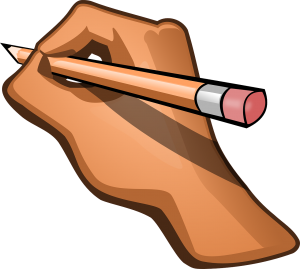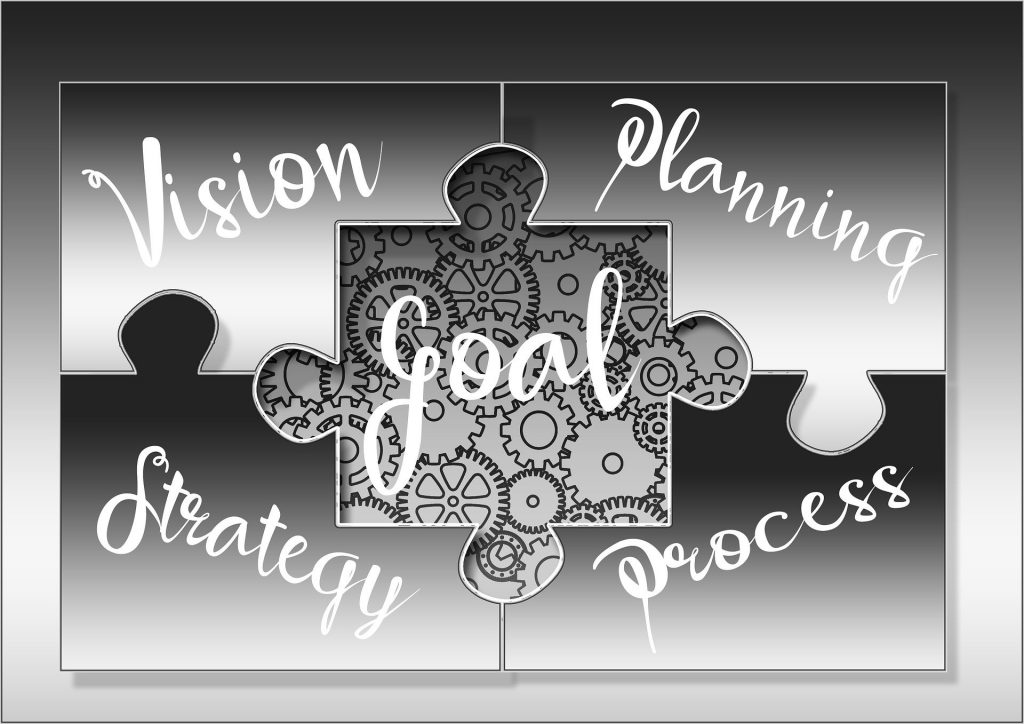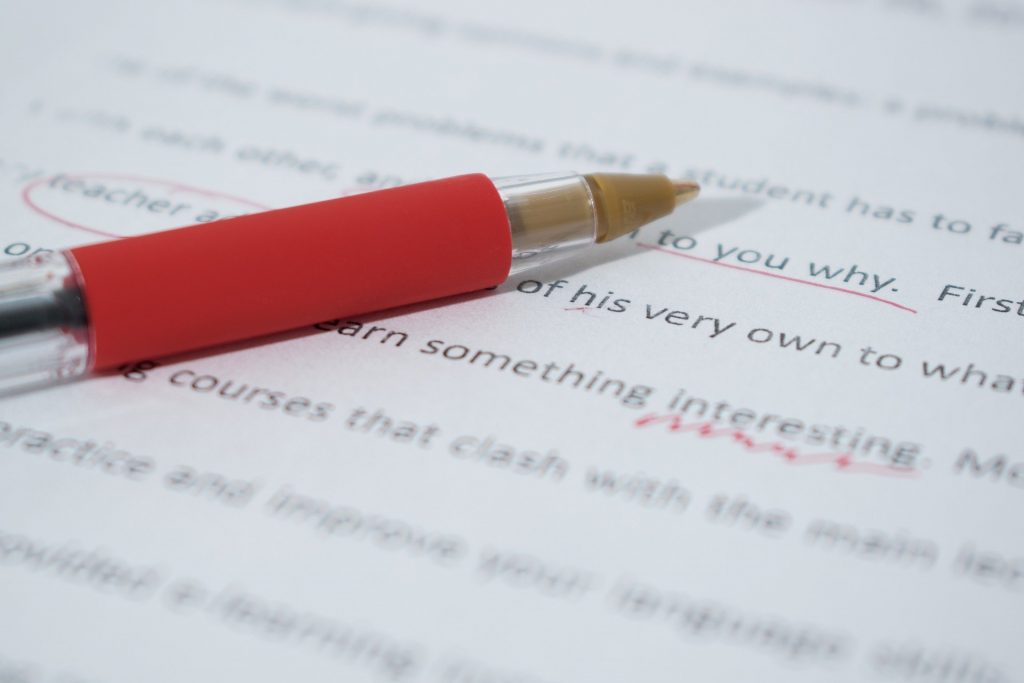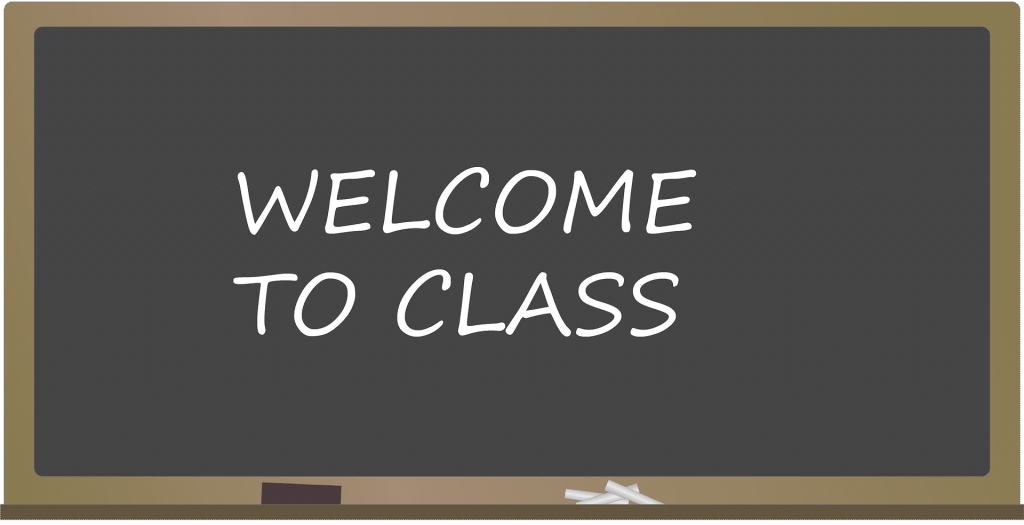Teaching Reflections
-
FYC Classrooms in the Digital Age

Writing across multiple modes . . . Multimodality — it is a buzz word that tends to bring forth mixed emotions for both professors and students alike. Technology seems to be here to stay, and with the emergence of digital media platforms (social media, eBooks, blogs, and digital learning structures), it has become increasingly more imperative for English composition instructors to expose students to the conventions of writing in these types of mediums. As an incoming English composition teacher, I consider it my duty to prepare students for writing across the curriculum, as well as for life beyond the walls of an academic institution. In previous blog posts, I have thoroughly discussed my intention of structuring the course as a methods-process based design in lieu of product-based only. However, as Alexander Reid explains, “Some writing instructors view emerging technologies with great enthusiasm; others view them as a threat” (185).
Being from a pre-technological advancement era, I understand the apprehension in embracing multimedia components in a college-level classroom focused on writing. With only sixteen weeks per semester and classes that last only fifty minutes three times a week, there is so much to be covered. The question becomes, how do I effectively teach students grammar instruction, writing instruction, composition theory (so they understand the why behind what they are being asked to do), as well as how to write for multiple audiences not only within varying genres but also across numerous modes of publications/platforms?

How to introduce writing across multiple mediums? The question is actually quite daunting, and while I find myself in this very scenario, I try to remain focused on Reid’s perspective, “Writers write. A course that takes as its objective the development of writers must begin and end with writing as an activity, and the amount of writing that students do should not be limited by the instructor’s ability to respond to the writing” (187). Bingo! My takeaway is this — just keep students writing! Regardless of the platform used, genre, or audience targeted, all writing and assignments do not need to be instructor graded. Since writers write, what better way to continuously support the course objectives and learning outcomes than to consistently provide students the opportunity to . . . JUST WRITE!

Just Write! Keeping the concept of “writing” in mind, while attempting to continuously expose students to multimodal writing, I have begun to design unit four of my English 1101 course design. The final project/essay will incorporate light research and multimodality. Students will research a topic (still working on the exact nature and/or origin of the topic) and compose an annotated bibliography to organize their research and prepare for English 1102 (the second course of the one-year sequence). Students will be expected to write a summary/analysis of research that will be relatively short, approximately 2-3 pages plus works cited page.
Next, students will utilize the same research information from the essay and create a multimodal project.
Examples of multimodal mediums that may be incorporated into the final product are blog posts, brochures, webpages, and PowerPoint presentations.

Multimodal Writing . . . The purpose of the assignment is to teach students first-hand how writing can be adapted not only across various genres but also across varying mediums. Technology is here to stay, and finding a way to incorporate said technology in composition classrooms will only strengthen students’ confidence in the art of writing, as well as provide real-world examples of why the concepts taught in English composition are of vital importance to life outside of academia.
Works Cited
Altmann, Gerd. Pixabay, 2020, pixabay.com/illustrations/light-bulb-think-idea-solution-2010022/.
Altmann, Gerd. Pixabay, 2020, pixabay.com/illustrations/interaction-social-media-abstract-1233873/.
Pexels. Pixabay, 2020, pixabay.com/photos/adult-diary-journal-notebook-book-1850177/.
Reid, Alexander. “The Activity of Writing: Affinity and Affect in Composition.” First-Year Composition: From Theory to Practice, edited by Coxwell-Teague, Deborah and Ronald F. Lunsford, Parlor Press, 2014, pp. 184-210.
Tumisu. Pixabay, 2020, pixabay.com/illustrations/blog-blogging-blogger-computer-492184/.
-
Rhetorical Grammar: The FYC Classroom

The art of written rhetoric . . . In Making a Case for Rhetorical Grammar, Laura R. Micciche introduces a very persuasive argument in support of teaching rhetorical grammar in composition classrooms. Micciche surmises, “The study of rhetorical grammar can demonstrate to students that language does purposeful, consequential work in the world — work that can be learned and applied” (716). Furthermore, Micciche elaborates, “We need a discourse about grammar that does not retreat from the realities we face in the classroom — a discourse that takes seriously the connection between writing and thinking, the interwoven relationship between what we say and how we say it” (718).
I must admit, I agree wholeheartedly with Micciche. By teaching students to edit and ‘polish’ their grammar in the final drafts of essays and written assignments, we are teaching them that grammar does not have a function in eliciting desired reactions (utilizing rhetorical appeals in persuasive arguments). Instead, we are teaching students that grammatical editing simply changes sentence structure and punctuation to conform to the prescriptive style of writing. As a tutor in the Kennesaw State University’s writing center, I can say from personal experience, this often translates to students being primarily concerned with comma usage and how to avoid the infamous comma splice. However, there is so much more to be discovered in the underlying premise of understanding and utilizing grammatical choices in writing.

Rhetorical choices in composition . . . Micciche references the book, Rhetorical Grammar, authored by Martha Kolln and Loretta Gray, as a resource. Last semester, one of the courses I took in the professional writing graduate program required Rhetorical Grammar as one of the textbooks. This book changed my life as a writer — literally. For some reason, I had to make it all the way to graduate school to identify a resource that not only provided a concise work about all things grammar-related, but it explains rhetorical choices through the usage of grammar as a way of achieving a writer’s desired results. Micciche further argues, “I am talking about rhetorical grammar as an integral component of critical writing, writing that at minimum seeks to produce new knowledge and critique stale thinking” (721).

Designing an English composition classroom . . . Each professor must individually decide the role rhetorical grammar will play in their classroom. For me, concepts found in both Rhetorical Grammar, and a book written by Gerald Graff and Cathy Birkenstein, They Say/I Say, which provides specific templates that employ rhetorical effects of written expression, will be integrated weekly into my course design. Specifically, each week I plan to set aside ten to fifteen minutes in class to discuss various topics found throughout these two textbooks. By providing my students with concrete examples of how the writing templates may be used or providing my students examples of how applying rhetorical grammar choices in the early composition phases of writing, will only enhance the readers’ experiences.
One specific example that I can offer from personal experience is what Rhetorical Grammar coins the ‘known-new contract’. A common concern I have witnessed from student feedback and inquiry is whether the essay or connecting paragraphs ‘flow’. The only guidance I ever received on this topic was to make sure the first sentence in a joining paragraph linked to the idea presented in the previous paragraph. Believe me, I agree with students, there is much more that needs to be explained when it comes to creating paragraphs and essays that take the reader through a seamless series of events — enter Rhetorical Grammar and the ‘known-new contract’. The concept teaches the first part of a sentence should be the ‘known’ information found in the preceding sentence. The latter part of the sentence should be the now ‘new’ information, and so it proceeds moving forward. This constant stream of known to new presentation gives the reader a sense of cohesiveness.

Writing for success . . . The lack of cohesiveness and effectiveness of rhetorical appeal found in composition writing can be directly impacted by the inclusion of grammatical “strategy” in the course. Yes, it takes up time in an already limited space. Yes, some students may approach it as ‘boring’. Yes, it is my duty as a professor of English composition to ‘teach’ my students ways that enhance their writing. An analogy I like to give is, “The more tools you have in your toolbox, the better.” My hope is that providing short excerpts of rhetorical grammar theory and implication into my English 1101 classroom will ultimately provide students with a new way of approaching the WRITING PROCESS. Again, my class will be process-oriented and not product-oriented. Yes, the product must manifest; however, I am more concerned with students learning to identify with writing as a process that works across the curriculum and across their professional careers outside of academia. Learning how to make rhetorical choices and not just ‘polish’ and ‘fix commas’ will lead to much greater success in the usage of rhetoric in writing.
Works Cited
Altmann, Gerd. Pixabay, 2020. pixabay.com/illustrations/business-idea-growth-business-idea-3189797/.
Falco. Pixabay, 2020. pixabay.com/photos/hildesheim-germany-lower-saxony-711009/.
Graff, Gerald, and Cathy Birkenstein. They Say / I Say: The Moves That Matter in Academic Writing. Fourth edition., W.W. Norton & Company, 2018.
Hahilove. Pixabay, 2020. pixabay.com/illustrations/light-bulb-ideas-sketch-i-think-487859/.
Kolln, Martha, J., and Loretta S. Gray. Rhetorical Grammar: Grammatical Choices, Rhetorical Effects. Eighth edition, Pearson, 2016.
Micciche, Laura R. “Making a Case for Rhetorical Grammar.” College Composition and Communication, vol. 55, no. 4, 2004, p. 716. EBSCOhost, doi:10.2307/4140668.
Wokandapix. Pixabay, 2020. pixabay.com/photos/classroom-school-education-learning-2093743/.
-
Journaling in the FYC Classroom

Journaling in FYC Classrooms How can I integrate the process of journaling into an English composition course?
The time has arrived — the moment I begin devising my first-year composition course design to include the syllabus, daily assignments (low stakes writing), and essays (high stakes writing). Over the past seven months, my peers and I have been immersed in pedagogical and practical application theory. From these areas of study, I have identified an area of focus that I would like to implement into my coursework model: journaling. Specifically, my interest in journaling comes from my desire to teach writing as a process, also known as contemplative writing (Miller and Kinane 2), and not just a product. The structural design of contemplative writing provides “. . . a way to explore and encourage the integration of mind, heart, and body in the process of learning” (Miller and Kinane 2).
Holistically, my work at the Kennesaw State University writing center has privileged me to witness how first-year composition students approach their assignments academically as well as emotionally. While students span the spectrums of confidence levels and perceived preparation, I have observed various phases of anxiety, stress, and lack of self-confidence when it comes to completing English 1101 and 1102 essays. Many times, through the course of just discussing the assignment guidelines in great detail, I find students tend to not only relax, but they also tend to get excited about their task at hand; students want to learn but need help navigating, analyzing, and interpreting their assignment guidelines. As a tutor, this signals to me that students want to engage in writing but may be apprehensive about how best to proceed — leading me to become a proponent of process-based pedagogy.

Start with self . . . In the quest to identify ways of helping my future students based upon an in-depth analysis of pedagogical research, I decided to start with myself. To be fair, I must disclose that I love to write; I love everything about it from freewriting, brainstorming, drafting, revision, to the final product. However, I have noticed that while all writers have more learn, a notion I learned from Naming What We Know (Rose 59-61), there is a distinct process that I utilize. This personal process almost always begins with focused freewriting. Interestingly enough, I had no idea there was a term for the process prior to my research. When some of the students that I tutor in the writing center are feeling overwhelmed, or experiencing an unclear sense of direction, I have them pull out a pencil/pen and paper. I then ask students to focus freewrite for a few moments. We take a key term associated with their writing assignment, and I have them write down anything and everything they can think of to get the mind actively engaged with the topic. Most of the time, that’s all it takes! By referring to keywords and phrases, students are then able to begin the brainstorming and/or outlining process. In other words, they go from ideas to creating a map of where their essay or project will continue to develop. Unverzagt (28) further describes this process that I have personally experienced with students: “Disordered and confused as freewriting may be, the aftermath of such explosive expression can be surprising and beneficial. After the students happen upon their thoughts in the ‘discovery draft,’ they can begin to process their sentences and impose a structure upon their writing, reshaping the mass of freewriting into a coherent form.”

Literary Research Research/Literary Analysis
Wanting to incorporate all of these first-hand experiences in conjunction with sound pedagogical theory, I began exploring scholarly research to ascertain the best practices of integrating journaling as a freewriting/focused application into the first-year composition classroom. Explicitly, the question I set out to answer for my course design is:
How can I integrate the process of journaling into an English composition course?
In the words of Socrates, “The unexamined life is not worth living” (qtd. in Stevens and Cooper 3). Stevens and Cooper discuss commonalities in the lives of those in higher education and argue, “If Socrates’ words echo anywhere, it should be in the academy — where the central goal is the creation of a thoughtful, educated society” (3). This concept leads to the discussion of journaling. First, for clarity, let’s define what a journal encompasses: “. . . sequential, dated chronicle of events and ideas, which includes the personal responses and reflections of the writer (or writers) on those events and ideas” (Stevens and Cooper 5). Boyd and Fales, 1983, defined reflection as “a complex and intentional intellectual activity that generates learning from experience” (qtd. in Stevens and Cooper 19), while Yancey defines reflection as “a process by which we know what we have accomplished and by which, we articulate accomplished products of these processes” (qtd. in Lauer 135). Similarly, Lauer suggests the purpose of writing “. . . as a process of inquiry is to seek insights and new understandings” (135), and D. Godron Rohman suggests, “. . . the journal, as a genre, allows students to access and actualize their true selves” (qtd. in Bawarshi 103). Also entering the academic debate, Reynolds suggests, “freewriting has been considered the ‘healthy habit’ of getting in touch with the unconscious layer of the mind and steering clear of writer’s block” (qtd. in Unverzagt 28). For all of these reasons collectively, there is strong evidential support of introducing first-year composition students to the art and skill of journaling.

Freewriting and Reflection . . . The research has and continues to show that reflection is vital to teaching writing as a process. Journaling is not only a form of free/focused freewriting, but it also can be utilized as a form of reflection in the process of composition writing; “as the term implies, this writing is like a mirror, giving you an opportunity to look at your developing self” (“Journals and Reflective” 72). The inquiry confirmed there is a place for self-reflection and journal writing within composition classrooms. Student testimonials are found throughout the literature of how students “report that they learn to write more fluently and easily” (qtd. in Stevens and Cooper 17). Ultimately, the goal is for students to consider and understand the rhetorical choices they make while engaged in the process of writing. The more students are able to reflect and identify their choices, the easier the writing will become. The easier writing becomes, the more versatile and adaptable it will become, not only across the curriculum but also in life beyond the classroom.
Developmental psychologists Kegan and Drago-Severson have identified two types of learning, informational and transformational (Stevens and Cooper 37), that we will consider regarding how to best implement journaling effectively. Informational learning “involves the acquisition of skills or knowledge, whereas transformational learning involves critical reflection on one’s assumptions . . .” (qtd. in Stevens and Cooper 37). This theoretical approach to learning reminds me of Charles Bazerman’s statement, “Awareness of rhetorical situation is the beginning of reflection on how we perceive the situation, what more we can understand about it, how we can formulate our goals, and what strategies we may take in our utterances” (36). Employing this theory into practice, I plan to implement daily low-stakes journal writing in my English composition classroom.
According to Stevens and Cooper (49), three basic writing principles support journal writing:
- Writing is thinking.
- Practice builds fluency in writing and the motivation to write.
- Students value journal writing when it is fully integrated into the course objectives and structure.

Idea – Brainstorm – Implement Action Plan
While various methods of journaling are used, Luo, Kiewra, Flanigan, and Peteranetz determined that for text-related learning, longhand composition is more beneficial than typing (qtd. in Portman 3). Students will be asked to purchase a composition notebook of their preference that can be used for daily journaling and bring it to each class meeting. The first page of the journal will function as a title page and include the student’s name, course number, and email address. Page two of the journal will be used as a table of contents (TOC) entry only. This will enable students to keep a working TOC throughout the semester in which they can easily access previous entries by topic or activity. Therefore, page numbers will be added to each page of the journal. Grading for completion will occur weekly and count towards the student’s overall course participation grade. According to Stevens and Cooper, students’ journal writing typically accounts for 10-30% of the final grade, with 20% being the most common (48), which I plan on adhering to and disclosing in my syllabus design. The syllabus will explain the motivation and learning outcomes associated with the use of journaling. Currently, the following course objectives in place for first-year composition will be exemplified by the usage of reflective journaling as many of the outcomes involve analysis, interpretation, practice, and composing:
- Practice writing in situations where print and/or electronic texts are used, examining why and how people choose to write using different technologies.
- Interpret the explicit and implicit arguments of multiple styles of writing from diverse perspectives.
- Practice the social aspects of the writing process by critiquing your own work and the work of your colleagues.
- Analyze how style, audience, social context, and purpose shape your writing in electronic and print spaces.
- Craft diverse types of texts to extend your thinking and writerly voice across styles, audiences, and purposes.

Concept Mapping – Brainstorming – Reflection – Summarizing Integrating journal writing into the course design and objectives will provide greater value from students’ perspectives. Based primarily upon ideas found in the research of Stevens and Cooper (77-105), I plan on incorporating the following types of journaling activities as low-stakes writing opportunities weekly:
- Freewriting – just as it sounds, students will be given opportunities to write about whatever is on their mind. Most of the time, this activity will be incorporated in the first few moments of class. I feel as though it will give students time to shift gears and prepare for the classroom activity or discussion that day.
- Focused Freewriting – similar to freewriting, however, a specific keyword, concept, topic, or idea will be provided for the student to then “freewrite” anything and everything that comes to mind for that particular element. This type of exercise may be useful in helping students identify research paper and essay topics of choice.
- Brainstorming – brainstorming will be used to help students formulate and narrow thesis statements for their essays. It may also be used to identify areas for discussion within essays such as bullet point ideas for body paragraphs.
- Concept mapping – the drawing of bubble diagrams may be helpful to students in lieu of traditional outlining. Some students portray a negative stigma towards traditional outlining as sometimes it induces a negative connotation from prior writing experiences. A bubble diagram will offer a similar blueprint but may be viewed as a more graphic and flexible representation of the essay/idea structure.
- Wordcloud generator – word clouds allow students to merge key point ideas and terms. They may be useful to incorporate vocabulary and critical thinking exercises.
- Metareflection – by reading previous journal entries throughout the course of the semester, students will have the opportunity to learn from what they have written. In other words, they will reflect on their freewriting reflection. This process not only teaches students to identify their rhetorical choices, but it also teaches students that revision and reflection are part of the writing process.
- Summary/Analysis – weekly required student readings will take place from the course textbook. However, research shows as few as 30% of students complete readings before the lecture (Stevens and Cooper 102). To help circumvent this scenario, students will summarize and/or reflect on assigned readings in their composition notebooks.

Writing: A Process of Life-Long Learning In summary, I am thrilled to learn that research in the field of rhetoric and composition supports the use of journaling in the English composition classroom. By providing students exposure to various types of journaling (mentioned above), they will begin to learn and develop their own “go-to” methods of prewriting, writing, revision, and reflection — the core components of the writing process. Replacing negative feelings, stigmas, and preconceived ideas with positive, supportive, and procedural attitudes, skills, and processes will foster a successful integration of writing not only in the academic classroom but in society as a whole.
Works Cited
Altmann, Gerd. Pixabay. 2020, pixabay.com/illustrations/idea-plan-action-success-concept-1855598/.
Altmann, Gerd. Pixabay. 2020, pixabay.com/photos/skills-can-startup-start-up-3371153/.
Bawarshi, Anis S. “Genre and the Invention of the Writer: Reconsidering the Place of Invention in Composition.” Utah State University Digital Commons, 2003, p. 103, digitalcommons.usu.edu/cgi/viewcontent.cgi?article=1140&context=usupress_pubs.
Bazerman, Charles. “Writing Speaks to Situations Through Recognizable Forms.” Naming What We Know: Threshold Concepts of Writing Studies, Classroom Edition, edited by Adler-Kassner, Linda and Elizabeth Wardle, Utah State University Press, 2016, pp. 35-37.
Clark, Hilary. Pixabay. 2020, pixabay.com/photos/journal-desk-wood-notebook-writing-1090599/.
Gellinger, Gerhard. Pixabay. 2020, pixabay.com/photos/books-read-learn-literature-3322275/.
“Journals and Reflective Writing.” WAC Clearinghouse, pp. 72-93. wac.colostate.edu/docs/books/involved/chapter4.pdf. Accessed 18 Feb. 2020.
Keller, Stefan. Pixabay. 2020, pixabay.com/photos/fantasy-eyes-forest-aesthetic-face-2824304/.
Kunze, Ralf. Pixabay. 2020, pixabay.com/photos/balance-meditation-meditate-silent-110850/.
Lauer, Janice M. “Invention in Rhetoric and Composition.” Parlor Press and WAC Clearinghouse, 2004, p. 135, wac.colostate.edu/docs/books/lauer_invention/lauer.pdf.
Miller, Marlowe, and Karoyn Kinane. “Contemplative Writing Across the Disciplines.” WAC Clearinghouse, pp. 1-5, wac.colostate.edu/docs/atd/contemplative/intro.pdf. Accessed 18 Feb. 2020.
Portman, Steve. “Reflective Journaling: A Portal Into the Virtues of Daily Writing.” The Reading Teacher, 2019, pp. 1-6, EBSCOhost, doi:10.1002/trtr.1877.
Rose, Shirley. “All Writers Have More to Learn.” Naming What We Know: Threshold Concepts of Writing Studies, Classroom Edition, edited by Adler-Kassner, Linda and Elizabeth Wardle, Utah State University Press, 2016, pp. 59-61.
Stevens, Dannelle D., and Joanne E. Cooper. Journal Keeping : How to Use Reflective Writing for Effective Learning, Teaching, Professional Insight, and Positive Change. Stylus Publishing, LLC., 2009.
TeroVesalainen. Pixabay. 2020, pixabay.com/photos/mindmap-brainstorm-idea-innovation-2123973/.
Unverzagt, Dori. “Freewriting: A Rationale and Techniques for Use in the First-Year Writing Classroom.” Kentucky English Bulletin, vol. 67, no. 2, Spring 2018, pp. 26–31. EBSCOhost, search.ebscohost.com/login.aspx?direct=true&AuthType=ip,shib&db=eue&AN=130403968&site=eds-live&scope=site.
-
FYC Goals: From Theory to Application

From Theory to Application . . . The pendulum is swinging, and with each tick of the clock, I find myself getting closer and closer to that first moment of comprehension — the one where I face twenty-six incoming freshman students that are as apprehensive of taking a writing course as I am teaching it for the first time. Did I design my curriculum to best meet the needs of my students? Are my learning outcomes in line with the course objectives? Are my assignment guidelines structured in a format that facilitates both clarity and cohesiveness? Is the sequencing and scaffolding design of the semester’s assignments logically chronological? As Teresa Redd references, “Talkin bout Fire Don’t Boil the Pot” (146). In other words, studying composition pedagogy may prepare me for understanding the needs of students, and may offer direction on how to best design the course, but all of this does not TEACH the students WRITING; hence, this is where the professor’s role comes into play.
After months of trying to absorb as much as I can researching different theoretical pedagogical perspectives, I now begin the process of mapping out assignments while considering the fundamental takeaways I feel are most critical to incorporate. Several takeaways stand out to me in the readings for this week and are highlighted below:

Audience Matters . . . Diversity in Writing. - Diversity in writing – “To develop students’ rhetorical knowledge and sense of authorship so that they can adapt writing to different purposes, audiences, and contexts” (Redd 147).
Coming from an occupational field outside of academia, I genuinely understand the need for students to be able to transfer writing skills from an academic to an applied setting. Learning how to write for audiences outside of the college classroom is something all students should be exposed to. Upon graduation, students may be tasked with various genres of writing: professional emails, corporate marketing, newspaper articles, social media postings, and for some, creative writing.

Writing for knowledge . . . - We write to learn – “ . . . writing enables us to think in ways that are virtually impossible without writing because we can reflect upon our thoughts more easily when we can see and preserve them” (Redd 148).
I have seen this scenario play out daily while working in the KSU writing center. Sometimes, students will come into the writing center and feel overwhelmed by the task at hand. In this situation, after carefully reviewing the professor’s assignment guidelines, I will begin the freewriting and/or brainstorming process. Often times, students will start to develop a structure or pattern based solely upon what they have written in these brainstorming sessions. I associate this process directly with “we write to learn” — we don’t know what we know until we write it. Furthermore, students recognize the fact they DO know something about what they would like to write.

Identifying your process is key . . . - Writing is a process – “We cannot truly teach writing without teaching the process of writing, for it is the development of flexible processes that will enable students to fulfill the wide range of writing tasks they will encounter in the university and beyond” (Redd 149).
As I have previously discussed in one of my recent blog posts, I believe teaching the processes of writing is very paramount in students’ success of not just freshman-level English composition, but I believe it is fundamental in helping students write BEYOND the current assignment. I met with a student just yesterday that has always enjoyed writing and has had great success in writing. For some reason, the current assignment was overwhelming them to the point they had writer’s block. I immediately began talking to the student to try and identify “processes” they had relied upon and typically used throughout the years that had seemed to work. Within a matter of a few moments, the student was writing again, which wasn’t due to anything I said other than encouraging them to draw upon their “processes.”

Genres of Writing . . . - Understanding different genres of writing – “Conventions make it easier for readers to comprehend a text, in large part because conventions fulfill readers’ expectations” (Redd 150).
Not only do students need exposure to writing across different genres for various types of audiences, but they also need to learn and understand the concept of genres and why they exist. For example, the characteristics of a personal email are quite different compared to the audiences’ expectations of a professional email. For one, professional emails typically require the writer to formally introduce themselves, persuade or inform their audience of a specific event/need, and request a call to action. Usually, none of those characteristics mentioned above would need to be included in a personal email. If students haven’t been introduced to various genres of writing, they won’t understand the needs and expectations of writing within those specific spaces.

Multimodality in Writing . . . - Multimodal writing – “To be truly literate, students need to choose appropriate technology for their role, purpose, and audience . . . At the same time, students need to incorporate technology to save time, paper, and energy” (Redd 151).
Multimodal writing is prevalent in today’s society, and I suspect it isn’t disappearing any time soon. If anything, it is here to stay. Understanding the prescriptive guidelines in multimodal writing and expression will help students identify and align with their intended audiences. For example, having students write a research essay on a topic of choice teaches and reinforces field research. Once the essay is completed, professors could have students compose a multimodal assignment (blog post, travel brochure, etc.) incorporating the same research as incorporated into the essay. This type of assignment would aid students in understanding how the same information can be presented in a multimodal and multidimensional environment.
Works Cited
Altmann, Gerd. Pixabay, 2020, pixabay.com/illustrations/tutor-coach-teacher-manager-407361/.
Altmann, Gerd. Pixabay, 2020, pixabay.com/illustrations/puzzle-planning-strategy-process-1686920/.
Altmann, Gerd. Pixabay, 2020, pixabay.com/illustrations/social-social-media-communication-3064515/.
Free-Photos. Pixabay, 2020, pixabay.com/photos/audience-crowd-people-persons-828584/.
Iqbal, Mudassar. Pixabay, 2020, pixabay.com/illustrations/webdesign-design-web-website-3411373/.
OpenClipart-Vectors. Pixabay, 2020, pixabay.com/vectors/hand-pencil-pen-edit-eraser-write-160538/.
Reed, Teresa. “Talkin bout Fire Don’t Boil the Pot: Putting Theory into Practice in a First-Year Writing Course at an HBCU.” First-Year Composition: From Theory to Practice, edited by Coxwell-Teague, Deborah and Ronald F. Lunsford, Parlor Press, 2014, pp. 146-166.
-
The Pedagogy of Scaffolding

How do the pieces connect? One of the biggest challenges I believe teachers face is bridging the gap between theoretical pedagogy and application. Haven’t we all heard sayings such as: “why do I need this?”, “I won’t use this ever again,” “this has nothing to do with my major,” “this is something that doesn’t happen in the ‘real world.’” As a student myself, I am not far removed from these mumblings that students whisper in the hallways. However, switching hats, so to speak, lends a newfound appreciation for the task that college professors face daily — how to convert theory into practice in an applied setting that “bridges the gap” for students. Put simply, the process of not just analyzing pedagogical theory, but the practice of dissecting its roots and integrating those roots into instruction. Let’s discuss this process!
The Sweetland Center for Writing at the University of Michigan put forth an article titled Effective Assignment Sequencing for Scaffolding Learning. To date, this has been the most beneficial article that I have read on providing concrete examples of assignments and processes that teachers and professors can implement. Studying the reasoning behind scaffolding assignments is a long way from learning how to take the conceptual theory of WHY we (professors) scaffold assignments and HOW to scaffold assignments. Interestingly enough, I am thrilled to report that as I read through the suggestions of low stakes to high stakes assignments, I found myself smiling; it was almost as though I could anticipate what was to come next. Why? Well, because I have discovered that the “theory” I am studying is something I am already MOST familiar with because my professors have and continue to use the same structure on me!!!

All writers have more to learn! So, giving you a chance a catch-up, or, rather, giving myself a chance to breathe, let’s look at that last statement, again. Yes, the same suggested methods of scaffolding used in Sweetland’s article are the same methods that my instructors have used to help us (my cohort) understand, learn, absorb, and comprehend the material being presented in class. As Sweetland suggests, “each assignment practices old skills and provides new skills students will also need to finish the next assignment” (par. 3). Several key items struck me and are concepts that I plan to incorporate in the near future while designing an English 1101 coursework portfolio. These items are listed below, and comparisons are made as to how I plan to utilize them next semester.
- Simple to complex: Yes, it seems simple, but isn’t always practiced in classroom pedagogy. We have all had that “course” where we jump into a large project and frantically begin googling anything we can find on “how to.” I strongly feel this shouldn’t be the case. As professors, we should be “scaffolding” our assignments to begin with simple aspects of the overall project and working our way up to more complex elements affiliated with the project/assignment. For example, having students “. . . practice summarizing course readings before they attempt to analyze them” is a simple to complex practice mentioned in the Sweetland article (par. 2).
- Revision is key: Yes, this is a thresholds concept we studied last semester. According to Sweetland, “Built-in, low stakes revision activities also have the benefit of undermining common bad habits by positioning writing as more than the typical two-stage drafting process . . .” This is something I can most definitely attest to after working in the KSU writing center. Often times, students come into the center on their first or second draft wanting to “proofread” their papers. The process of revision seems to escape many students. I believe giving students some type of course credit for the “revising” portion of their assignment will enable them to begin bridging a gap between “I’m done” to “let’s review this again.” As I have seen in the writing center, initially, students are keener on considering revision when there are points assigned to the process.
- Practice engaging the material: Yes, I, too, have complained about discussion board postings in some of my graduate courses. Sometimes they feel like “busy work” at first glance. However, I have found that what I thought was “read this and leave some specific thoughts about it” turned into genuinely beginning to understand and work with the ideas found within those articles to build upon the next assignment. For example, an assignment in one of my courses was to read a few chapters on English dialects in various United States’ regions. Although it was interesting, the material was very dense, and I found myself losing intimate details as I left one region and began another; in other words, my retention of the content was challenging at best. But the next assignment expanded the same concept into international regions and the differences within English dialects in those areas. Without a doubt, the research I completed for different dialects of English within the U.S. helped me to understand the material I was researching for international dialects.
- Pre-Writing Assignments: Yes, many students shudder at the concept of pre-writing. “I don’t outline” is something I have heard many times while working in the writing center. For some reason, there appears to be a negative connotation with the term “outline.” I’m not sure if this is due to mandatory practices in previous courses, but I believe you could describe the same process as outlining but term it something else, such as “mapping,” and students would offer a more positive response. Sweetland suggests a project proposal design that “ . . . provide an opportunity for students to articulate what they want to accomplish with a project as well as generate feedback from you and/or from their peers” (par. 8). Structurally, the project proposal directive enables students to “brainstorm” without realizing they are “brainstorming.” It also gives students the ability to create a mental “outline” without having to produce a traditional “outline.” I would suggest it is virtually impossible to write/draft a project proposal without (at least mentally) working out the “blueprint” of what, where, how, why, and when the project will need/address.
Below is a video by Texas A & M University Writing Center that gives some very helpful tips students can use for the pre-writing process:
Pre-writing for success! While I could probably go one for pages yet to come, I want to wrap this blog post up by saying the most influential takeaway from the Sweetland article, for me, is the concept of reflective writing. For years I have written whatever came to mind at the time when needed to draft an assignment or essay. It wasn’t until this past semester in graduate school that reflective writing was introduced to me. At first, I found it quite challenging to express the reasons behind the rhetorical choices I made in essay composition. Once I fumbled through the first few paragraphs, I realized that by reflecting on my writing style and the choices I made in writing enabled me to write more expressively in future draftings. Stated another way, as a writer, once I began to identify “why” I wrote “what” I wrote, I was then able to make more deliberate statements that tend to be more powerful and provide better clarity. As always, ALL writers have more to learn, and by utilizing the method of self-reflection, I hope my writing continues to improve and delivery enhanced. Sweetland breaks the reflection component down to the following three sectors (par. 12):
- Changes they’ve made to their final draft
- Why and how they made those changes
- What those changes demonstrate about their thinking/writing development

Rome wasn’t built in a day . . . Final takeaway — the cliché Rome wasn’t built in a day applies to many facets in life, writing included! Before learning sentence structures, students must learn vocabulary. Before learning essay construction, students must learn paragraph construction. Integrating low stakes to high stakes writing in the composition classroom, known as scaffolding assignments, will provide students with a better understanding of not only WHY they are completing an assignment or project, but will also help bridge the gap between theory and practice. When a student understands why they are completing a task and reflects on the choices they made, the likelihood they are able to transfer those same skills to other facets in life is more likely.
Works Cited
B., Thomas, Pixabay, 2020, pixabay.com/photos/strommast-power-generation-4459235/.
“Brainstorming.” YouTube, uploaded 8 March 2016 by Tamuwritingcenter, youtube.com/watch?v=HSufG-AIQYo.
“Effective Assignment Sequencing for Scaffolding Learning.” Sweetland Center for Writing, University of Michigan, lsa.umich.edu/sweetland/instructors/teaching-resources/sequencing-and-scaffolding-assignments.html. Accessed 4 February 2020.
OpenClipart-Vectors, Pixabay, 2020, pixabay.com/vectors/colosseum-italy-romans-rome-ruin-1296587/.
Vasek, Jan, Pixabay, 2020, pixabay.com/photos/laptop-woman-education-study-young-3087585/.
-
Journal Prewriting for Academic Success

Writing about Writing This week’s reading focuses on rhetorical situations and the types of activities that could be implemented in the first-year composition classroom to aid students in making real-world connections. Reading through the components of Aristotle’s primary modes of analysis (ethos, pathos, logos), the concept of prewriting caught my eye — it is something that I strongly identify with in my own writing process and something that I discuss with students that visit the campus writing center for tutoring sessions. As I mentioned in last week’s post, writing about writing (WAW) is a theory of pedagogy that I intend to incorporate in my classroom next fall. Put simply, teaching the methods and modes of the writing process itself will be my main focus.
According to Lunsford et al., “ . . . prewrite by assessing your writing (that is, rhetorical) situation, asking ourselves questions such as the following: Who is my audience? What does the audience expect of me? What do I already know about this subject? What must I find out? How can I best arrange my information and ideas? How much time do I have? How long should the composition be?” (90). The simple questions that many writers ask themselves as they begin to compose are rhetorical in nature, even though, often students and writers don’t consider them as part of a “prewriting” process. When many students hear “prewriting” (myself included during my undergraduate years), they think of “outlining.” Prewriting can consist of many different tactics and styles to include freewriting, focused freewriting, dance boxes (which is a type of word association technique), keyword blast, etc. As Lunsford et al. further states, “Encourage your students to respond to these questions by ‘thinking with a pencil in hand,’ jotting down ideas in their writing logs” (90 – 91).

Writing Journal Sometimes it only takes ONE keyword to bring forth a whole slue or landslide of ideas. In this case, it took me two words — writing logs — in the quote mentioned above to realize another practice I want to implement in my composition classroom next fall: writing journals. Since my primary pedagogy will be student-centered and revolve around the WAW concept, I want to implement processes that will aid students in being and feeling more successful in their writing, not only for this class but for many courses and professions in the future. By designing the curriculum to include processes, such as a writing journal, and freewriting activities, such as freewriting/brainstorming, my hope is students will become accustomed to a formalized process that will aid them in writing assignments yet to come. In other words, the primary methods behind a completed essay are the practices I want to strengthen and highlight for students. Below is a short video that describes the process of keeping a writing journal:
Journaling for Success As I mentioned above, part of the goal in teaching a process-oriented approach for English Composition is to not only prepare students for future academic essays and assignments but to also prepare them for writing in professional careers. Douglas Hesse references four separate types of “domain” writing when determining how to structure a course: academic (genres of the academy with a particular emphasis on . . . thesis and support), civic (writing to influence opinions and decisions in public realms), vocational (genres used to transact work in business and professional settings), and aesthetic (writing to create engaging artifacts from memoirs to poems to literary essays). While Hesse acknowledges a thorough submersion of the four types of writing mentioned would be difficult at best in a fifteen-week course (49-50), I feel as though exposing students to the different genres of writing is of equal importance. Academic emersion is a given since students will compose narratives, research papers, and essays throughout their college years. Civic writing is something students may or may not be exposed to depending upon their specific degree of choice. By utilizing an argumentative essay assignment to incorporate the use of rhetorical appeals (ethos, pathos, logos, kairos) with topics involving civic discourse, students will have the opportunity to experience two distinctly different genre writing styles into one essay assignment; in other words, students will have the chance to multi-task in the composition classroom.
In summary, this week’s readings brought forth a lot of “brainstorming” and “direct focus” for me in regards to considering not only how to implement writing about writing strategies into the course but also how to also expose students to various genres of writing without having to assign an overabundance of assignments. By strategically pairing process and content, my hopes are to prepare students for writing beyond my classroom.
Works Cited
Anson, Chris M. “Writing, Language, and Literacy.” First-Year Composition: From Theory to Practice, edited by Coxwell-Teague, Deborah and Ronald F. Lunsford, Parlor Press, 2014, pp. 3-19.
Coxwell-Teague, Deborah, and Ronald F. Lunsford, editors. First-Year Composition: From Theory to Practice. Parlor Press, 2014.
“Essay Writing for University: Starting a Journal.” YouTube, uploaded by Wendy Davis, 5 December 2011, https://www.youtube.com/watch?v=NSb6qZXeqcA.
Gerd, Altmann. Pixabay, 2020, https://pixabay.com/illustrations/puzzle-planning-strategy-process-1686918/.
Hesse, Douglas. “Occasions, Sources, and Strategies.” First-Year Composition: From Theory to Practice, edited by Coxwell-Teague, Deborah and Ronald F. Lunsford, Parlor Press, 2014, pp. 49-66.
Lunsford, Andrea, Jeanne Law Bohannon, Alyssa O’Brien, and Lisa Dresdner. Teaching with Lunsford Handbooks. 3rd ed. Bedford/St. Martin’s: 2019.
Pexels. Pixabay, 2020, https://pixabay.com/photos/arm-hand-desk-notebook-pen-1284248/.
-
Interactive Compositional Classrooms

Active Learning One of the courses I am taking this semester focuses on compositional pedagogy in high school and college settings. As I prepare to enter an English 1101 classroom next fall as part of my graduate-level training, I am beginning to strengthen and hone in on my philosophical approach. Each week consists of required readings and analysis of those readings to include “takeaways.” As a student, sometimes it seems like an over-abundance of information while searching for the needle in a haystack, so to speak, or rather, the fundamental components of classroom pedagogy that resonate in some way with one’s perceived educational platform. However, that moment when you read something that seems to vibrate on a frequency so profound that you want to shout with excitement, is, well, EXCITING!

Discovering Your Frequency Chris M. Anson’s discussion found in chapter one of First-Year Composition: From Theory to Practice is one such piece for me. Anson discusses a pedagogical approach known as WAW (Writing About Writing – see video below), which defines and addresses writing as a process. Following the WAW approach, the focus is less about the ability to write and more “ . . . on thinking about the thinking that writing involves . . .” Anson further states, “Developing ‘mindfulness’ and meta-cognitive awareness becomes one of the most important aims . . .” (5).
Wardle and Downs (WAW) Any many of you know, last semester involved studying Adler-Kassner and Wardle’s threshold concepts from Naming What We Know, specifically, threshold concept five: Writing is (Also Always) a Cognitive Activity. As I read through Anson’s excerpt, I found myself shaking my head, yes! over and over. Anson structures his classroom to feature “extensive, low-stakes and reflective writings” (6). This process of giving students many opportunities to participate in “low-stakes” writing is something I most definitely want to incorporate in the classroom. I feel as though “de-stigmatizing” the process of writing is essential for students to become comfortable with approaching writing as a process —not something that is easy for those that enjoy writing but a process that writers of all levels can use to develop the skill.
I believe just about every college student has experienced the “PowerPoint lecture” classroom design that seems to go on for eternity. No matter how awake you may feel or how artistically designed the presentation may be, the lights dim, and the eyes get heavy. The advancement of classroom technology and the emergence of digital course discussion boards demand a change in how the class time is structured. When I read Anson’s “course delivery reversal” (CDR) (10) design, I wanted to jump up and down. Instead of professors spending the entire class period lecturing in front of the students, Anson takes an interactive approach. Presentations can be posted to the online digital boards, and students then have the opportunity to engage, discuss, and learn through interactive projects. My goal is to incorporate this same type of pedagogy in my English composition classroom. Since writing is known to be a social and rhetorical activity, the more time students spend conversing, the more enhanced the process of writing will become. Below is a video where Anson discusses the importance of this concept in regards to interaction between teachers and students in the field of writing.
Chris Anson – 2013 CCCC Convention Interview Works Cited
Adler-Kassner, Linda, and Elizabeth Wardle, editors. Naming What We Know: Threshold Concepts of Writing Studies, Classroom Edition. Utah State University Press, 2016.
Anson, Chris M. “Writing, Language, and Literacy.” First-Year Composition: From Theory to Practice, edited by Coxwell-Teague, Deborah and Ronald F. Lunsford, Parlor Press, 2014, pp. 3-19.
“Chris Anson – 2013 CCCC Convention Interview.” YouTube, uploaded by NCTEvideo, 19 March 2013, youtube.com/watch?v=Bd12JROKWJ4.
Clker-Free-Vector-Images. Pixabay, 2020, pixabay.com/vectors/teachers-meeting-books-reading-23820/.
Coxwell-Teague, Deborah, and Ronald F. Lunsford, editors. First-Year Composition: From Theory to Practice. Parlor Press, 2014.
Geralt. Pixabay, 2020, pixabay.com/illustrations/banner-header-person-silhouette-997373/.
“Meet the Authors of Writing About Writing.” YouTube, uploaded by Macmillan Learning, 1 November 2014, youtube.com/watch?v=UDyPE2IMD68.
-
Student-Centered Holistic Teaching Philosophy

Writing is a Social and Rhetorical Activity . . . All Writers Have More to Learn One of my most rewarding experiences as a graduate teaching assistant in the Master of Arts in Professional Writing program at Kennesaw State University has been the evolution of self. Giving and sharing part of yourself with others requires great focus and reflection of not only where you are but where you have been. Looking back from this reflective contextual framework, I re-read a quote of mine that has now come to full fruition, “Writing, like life, is a series of events and experiences that lead the writer to traverse different paths. Often times, this exploratory process remains in the shadows, out of sight, and unbeknownst to each writer” (Grant, “Writing: Know Yourself”). At the time this blog post was written, I was completely submerged in the very process I was mentioning. Looking back now, at the end of the semester, I realize how fundamental those words have been in shaping my underlying philosophical methods of teaching.
I began the master’s program this fall in hopes of one day becoming a successful professor of writing. The most eye-opening experience to date has been the realization that what works best for students, also works best for instructors. There is no magical one-size-fits-all when it comes to the teaching of writing. There is no magical one-size-fits-all classroom pedagogy and most definitely no one-size-fits-all student learning process. The one major takeaway from not only this course, Understanding Writing as a Process, but also from my experience across the graduate-level curriculum, is that learning should be a holistic and student-centered experience. I believe the purpose of education is to provide knowledge and tools from which students can use as a springboard for learning. As stated in a previous blog post, “the foundational approach to this style of instruction is concerned with the student’s ‘whole self’” (Grant, “Perseverance”).
It is in this basic premise that I foster my teaching philosophy — that I am a facilitator of learning only. It is not my intention or my goal to tell students the “right way” to write. Instead, I want to provide them training and education in English composition so that they may grow and blossom in their own writing styles. In other words, I hope to provide the foundational materials necessary to gain confidence, skills, and classroom experiences that will enable students to pursue their unique paths. Writing is a part of every aspect of life, and no two people have the exact same style. I want students to expand their classroom learning experiences and develop personal and individual writing abilities as well as strengthen communication skills from those said experiences. Empowering others through the sharing of knowledge is very important to me. Helping foster confidence and expressivity of self through writing composition is the framework from which I have built and will continue to develop my classroom pedagogy.

Student-Teacher Goals Students learn best by practice and hands-on experience. Memorizing and studying are necessary methods of learning retention, but learning through personal experience creates a stronger cognitive bond. Incorporating a student-centered approach is essential as not all students will present at the same juncture in their learning journey. By meeting students where they are academically, as a professor, I can then help promote confidence in the writing process. Overwhelming students and applying a one-size-fits-all framework will lead to insecurity and wilting of the blossoming process described above. My goals as a professor are as follows: to teach and foster writing habits that can be adopted across the curriculum; to teach the mechanics behind what can make writing powerful. In other words, my goal is to not only help students adapt various types of writing styles depending upon the end-user but to also teach them ways in which to make their writing present as more powerful to the intended reader. Ultimately, the utility of writing is a mode of communication. Therefore, learning strategic ways of self-expression through the written medium will only enhance communication skills, as well as strengthen written and multimodal rhetoric.
My teaching philosophy is based heavily on Linda Adler-Kassner and Elizabeth Wardle’s classroom edition of Naming What We Know: Threshold Concepts of Writing Studies. This semester, as a small cohort, we studied the five threshold concepts of writing pedagogy, and I found myself intrigued and supportive of two main points to include: all writers have more to learn and writing is a social and rhetorical activity. These two concepts alone represent the groundwork from which I will base my classroom instruction. Similarly, I had the opportunity to shadow Dr. Amy Sandefur’s English 1101 course for a syllabus analysis project and was able to witness these concepts being implemented in her pedagogical approach. Because these concepts are so paramount in my teaching philosophy, I would like to discuss each one individually.

Revision is key to successful writing All writers have more to learn. Such a short statement, yet so very profound in the instruction of composition. As a graduate teaching assistant at the Kennesaw State University writing center, I have had the opportunity to meet with students from various academic levels, from college freshmen through doctoral thesis work. Regardless of the writing abilities or educational level of writing, all students benefit from revising their work. Countless times I have experienced meeting one-on-one with a student that felt as though they were only in the writing center to make final line editing “proofreading” changes in their essay. However, after reviewing the assignment guidelines, reading through the polished essay, and discussing areas where global and local changes could be incorporated, students typically leave with self-directed modifications that lead to further revision. Through the revising process, students learn to view their writing not as an author, but as a reader. With each revision brings greater rhetorical focus and more targeted communication.

Writing is a Social and Rhetorical Activity . . . Writing is a social and rhetorical activity. The Conference on College Composition and Communication supports this theoretical concept and encourages teaching methods in the classroom that allow for social activities such as collaborative peer review throughout the drafting, writing, and revision processes. I have experienced this concept at work in the KSU writing center, as well. At times, students come into a session with no idea what to write or even where to start. Immediately, we begin by reviewing the instructor’s guidelines for the assignment. Generally, although students have already read the instructions on their own, they seem to have an “ah-ha” moment where they begin to understand the task at hand. The only aspect of the writing process that has changed since they entered the writing center was a conversation, a social activity. As Grant references, “communication is so ingrained in human nature that often times we don’t need to think or analyze our actions in response to verbal cues” (“The Essence”). As a tutor-student partnership, we then begin the brainstorming process, and within minutes, students seem to have a glow about them, and stress levels seem to wither away. The process of talking about the assignment and bringing every-day context to the task at hand enables the writing process to begin.

Writing is a Process . . . Writing is just that — a process! Every process I have experienced and learned through my work in the writing center has led to understanding and believing that writing really is an actual process. In the beginning, it is crucial for students (and professors) to just get their thoughts expressed on paper or the flashing white, blank page on the computer screen. The initial process of letting the mind wander and documenting thoughts as they manifest is fundamental. For many students, this initial brainstorming will then lead to a workable outline from which students can reference as they begin the initial draft composition. This first draft is meant to establish a framework that students may then revise, participate in peer review, revise again, and so goes the recursive nature of writing. Helping students embrace this process of writing will lead to enhanced future success in all types of writing. Below is a video that explains this process in detail.
How to Teach Writing as a Process Using these two threshold concepts of learning as well as my own writing center experiences, I fully plan to integrate and contextualize them into my classroom pedagogy. Students will experience and have the opportunity to participate in peer review, which supports all three of the theoretical platforms and fosters the recursive process of writing. Above all else, writing tends to cohabitate with a persona of difficulty for many students. My student-centered philosophy is aimed at de-stigmatizing the writing process, strengthening student confidence in their own writing processes, and supporting the learning process of a skill that students will utilize for the rest of their academic and professional careers, in addition to their personal lives.
References
Abdullah, Shahid. Pixabay, 2019, pixabay.com/illustrations/plan-do-act-check-system-workflow-1725510/.
Adler-Kassner, Linda, and Elizabeth Wardle, editors. Naming What We Know: Threshold Concepts of Writing Studies, Classroom Edition. Utah State University Press, 2016.
BibliU. “What Does ‘Holistic Learning’ Mean for Students?” YouTube, uploaded 1 Aug. 2019. youtube.com/watch?v=2aFIfCwSEnc&feature=youtu.be. Accessed 30 Nov. 2019.
Cafaro, Lorenzo. Pixabay, 2019, pixabay.com/photos/correcting-proof-paper-correction-1870721/.
“CCCC Position Statements.” Conference on College Composition, 22 October 2018, cccc.ncte.org/cccc/resources/positions.
Geralt. Pixabay, 2019, pixabay.com/photos/feedback-exchange-of-ideas-debate-2463927/.
Grant, Melinda. “The Essence of Writing.” Whisperings, 9 Sept. 2019, mgailgrant.com/philosophical-thoughts/the-essence-of-writing/. Accessed 30 Nov. 2019.
Grant, Melinda. “Perseverance in Writing.” Whisperings, 25 Aug. 2019, mgailgrant.com/philosophical-thoughts/perseverance-in-writing/. Accessed 30 Nov. 2019.
Grant, Melinda. “Threshold Concepts in Action.” Whisperings, 2019, mgailgrant.com/projects-assignments/threshold-concepts-in-action/.
Grant, Melinda. “Writing: Know Yourself.” Whisperings, 14 Sept. 2019, mgailgrant.com/philosophical-thoughts/know-yourself-through-writing/. Accessed 30 Nov. 2019.
Kalhh. Pixabay, 2019, pixabay.com/illustrations/workshop-training-seminar-group-1425446/.
NikolayFrolochkin. Pixabay, 2019, pixabay.com/photos/diary-office-work-pen-notebook-1974728/.
Write On! with Jamie. “How to Teach Writing: The Writing Process.” YouTube, uploaded 2 May 2013. youtu.be/JPUh9mfSqWU. Accessed 30 Nov. 2019.
-
Principles of Teaching Writing

Teaching Writing in Postsecondary Classrooms Writing is such a complex yet fundamental aspect of our lives. It begins in early childhood and evolves and matures throughout our adulthood. Each week we have discussed the threshold concepts presented in Naming What We Know, classroom edition (Adler-Kassner and Wardle), and examined writing from many different angles: writing as a social and rhetorical activity, writing and how it speaks to situations through recognizable forms, how writing enacts and creates identities and ideologies, how all writers have more to learn, how writing is (also always) a cognitive activity. Each threshold concept deciphered the mechanics of not only how writing is viewed, but how writing is learned and executed. As I prepare to enter the classroom as a first-year English composition instructor, I hold tightly to the beliefs that the progression of learning never ceases. In other words, we are never truly done with learning everything there is to know about writing. Do you know why? Let’s consider this paradigm.
One of the first steps in preparing for the classroom is to gain a better understanding of the needs and expectations of students in regards to writing. By studying position statements from the WPA (Council of Writing Program Administrators), the CCCC (Conference of College Composition and Communication), and NCTE (National Council of Teachers of English), I have been able to identify common goals, techniques, and assessment guidelines for teachers of composition. What I discovered, is that many of the threshold concepts that I have studied as part of my graduate school curriculum in preparation for teaching in the classroom are also common themes found in position statements of the professional programs mentioned above.
The CCCC lists twelve identified principles of sound writing instruction in their purpose statements. As I was glancing over the guidelines, the first three caught my attention. It shouldn’t have been a surprise, yet I found myself intrigued to see three principles of “good writing” instructions to be three specific topics I have studied quite extensively this semester. The first principle listed by the CCCC is, “Sound writing instruction emphasizes the rhetorical nature of writing” (“CCCC Position Statements”). This is also the first threshold concept I studied, “Writing as a social and rhetorical activity” (Adler-Kassner and Wardle). The CCCC’s position statement for this concept is, “To be rhetorically sensitive, good writers must be flexible. They should be able to pursue their purposes by consciously adapting their writing both to the contexts in which it will be read and to the expectations, knowledge, experiences, values, and beliefs of their readers.” To understand this principle, let us first watch this video produced by the University of Maryland, Baltimore Writing Lab titled, “The Rhetorical Situation”:
“The Rhetorical Situation” As we can see, being able to utilize persuasive rhetoric leads to sound writing practices in the classroom.
Another threshold concept that is utilized in the CCCC’s principles of sound writing is audience. Learning to write for an intended audience is a skill that uses the rhetorical devices logos, pathos, and ethos. In the postsecondary teaching of writing, creating opportunities for students to engage and practice this type of persuasive rhetoric will help develop first-year composition (FYC) writing abilities.
Writing is considered a social activity, and as we have discussed, this is one of the main threshold concepts studied this semester. The CCCC recognizes the importance of this theory, and teachers are encouraged to incorporate teaching methods in the classroom that allow for social activities such as collaborative peer review throughout the drafting, writing, and revision processes. In addition to peer review, many universities have writing centers where students can receive first-hand experience of having their writing read by a specific audience. As a teaching assistant in KSU’s writing center, I have participated in this process and can’t speak highly enough about the benefits of having someone else, even another student, read your writing. Usually, within minutes of having a student read their work aloud, they begin making unsolicited changes in their composition piece. Why? Well, because writing is a social activity. When students have the opportunity to hear their words, they relate the written word to the spoken word, and suddenly, writing becomes easier.
I am excited to witness the threshold concepts presented this semester actively in the first-year composition classroom. The theoretical framework of the Conference on College Composition and Communication’s position statements is something I have been studying all semester via multi-modal methods of classroom discussion, PowerPoint presentations, blog posts, and group workshops. I mention these various methods of learning because it is a process I intend to model in the classroom. Good writing begins with great instruction.
Works Cited
Adler-Kassner, Linda, and Elizabeth Wardle, editors. Naming What We Know: Threshold Concepts of Writing Studies, Classroom Edition. Utah State University Press, 2016.
“Appealing to Your Audience.” The Word on College Reading and Writing, (n.d.), openoregon.pressbooks.pub/wrd/chapter/appealing-to-your-audience/.
“CCCC Position Statements.” Conference on College Composition, 22 October 2018, cccc.ncte.org/cccc/resources/positions.
“How We Help Writers.” Kennesaw State University Writing Center, 2019, writingcenter.kennesaw.edu/writing_support/help-writers.php.
Sablan, Jurika. “Benefits of Peer Review in Academic Writing.” Youtube, uploaded 23 June 2017, youtu.be/iNsFkQAqQGs.
“The Rhetorical Situation.” YouTube, uploaded by University of Maryland, Baltimore Writing Center, 24 April 2014, youtu.be/A-eRycqjzbg.
Tumisu. Pixabay. 2019, pixabay.com/illustrations/back-to-school-classroom-school-913073/.
-
Writing: A Cognitive Activity

Metacognition: Thinking about thinking! Over the course of this semester, I have been quite amazed at how my “brain has stretched” for lack of a better way to describe the phenomenon. The threshold concepts we have been studying in regards to writing have changed my outlook on various aspects of composition; this week is no exception. I have always been interested in how the human brain processes information, hence why I chose the field of psychology for my undergraduate degree. The title of this week’s threshold concept is, “Writing is a Cognitive Activity.” According to Dylan Dryer, one of the premises of writing is, “… if writing is always a social and rhetorical act, it necessarily involves cognition” (71). Further research suggests that not only is writing a social and rhetorical act but, “neural processes essential to writing must be successfully coordinated across different areas of the brain; revision, even for seemingly uncomplicated ‘errors’ is cognitively quite complex” (73).
The human brain has a workspace known as working memory. This is where bits of information are processed and stored for easy access in cognitive events. As Dryer mentions, “… writing is cognitive not only because it draws on the full resources of our nervous system but because it actively influences our nervous system as well” (73). Have you ever stopped to wonder how the human brain facilitates the thought process a writer undergoes when composing? Below is a short video by Trace Dominguez that describes how your brain actually powers your thoughts.
Thinking requires brain activity… Have you ever noticed that writing a paper, article, or even blog post is easier and more enjoyable when you have an emotional connection to the topic being discussed? Charles Bazerman and Howard Tinberg explain this paradigm, “The emotional engagement of scientific writers for their subject may entail careful attention to evidence and reasoning grounded in prior work in the field and understanding of the theory and methodological principles of the field; yet without a passion for the subject that turns a writer’s full mind and thought to the task of producing new words and ideas, little of value would get written” (74-75). As writers, we love to write about topics in which we have an emotional connection or issues that we find relatable. I know for myself, one of the most challenging forms of writing I have experienced was the standard five-paragraph theme essay in high school. Writing exactly five paragraphs on something of little interest to myself, was not enjoyable. However, the repetitive style that was required led to a familiar situation explained by Chris Anson, “repeated practice of the same mental task or activity can lead to what psychologists call automaticity or unconscious competence, the application of a process or the retrieval of information that doesn’t require conscious attention” (77).
Leigh Hancock, an English instructor for Columbia Gorge Community College, explains to her students how writing involves the full brain. With each hemisphere of the brain specializing in different aspects, they must work together for elements involved in writing to manifest.
Not only is writing a cognitive process, but it also involves metacognition. Metacognition is the process of “thinking” about mental processes! As Tinberg suggests, “Metacognition is not cognition. Performance, however thoughtful, is not the same as awareness of how that performance came to be” (75). One form of metacognition employed by writers is the technique known as reflection. The goal of reflection for a writer is to consider why they made rhetorical choices they chose. As Kara Taczak stated, “… writers who are more attuned to conscious reflection make deeper choices” (79). This process gives writers an opportunity to learn from their methods, identify meaning behind their chosen style of rhetoric, and adapt future writing based on the knowledge they glean from studying their own preferences. Put simply, metacognition is a valuable methodology each writer has the ability to utilize to become a better writer. Taking time to understand their stylistic decisions will help them identify areas for change or development.
Works Cited
Adler-Kassner, Linda, and Elizabeth Wardle, editors. Naming What We Know: Threshold Concepts of Writing Studies, Classroom Edition. Utah State University Press, 2016.
Altmann, Gerd. Pixabay. 2019, pixabay.com/illustrations/board-think-structure-solution-765310/.
Anson, Chris M. “Habituated Practice Can Lead to Entrenchment.” Naming What We Know: Threshold Concepts of Writing Studies, Classroom Edition, edited by Adler-Kassner, Linda and Elizabeth Wardle, Utah State University Press, 2016, pp. 77-78.
Bazerman, Charles, and Howard Tinberg. “Writing is an Expression of Embodied Cognition.” Naming What We Know: Threshold Concepts of Writing Studies, Classroom Edition, edited by Adler-Kassner, Linda and Elizabeth Wardle, Utah State University Press, 2016, pp. 74-75.
Dominguez, Trace. “This is How Your Brain Powers Your Thoughts.” YouTube, uploaded by Seeker, 9 April 2017, youtu.be/yxUkUaV2VPs.
Dryer, Dylan B. “Writing is (Also Always) A Cognitive Activity.” Naming What We Know: Threshold Concepts of Writing Studies, Classroom Edition, edited by Adler-Kassner, Linda and Elizabeth Wardle, Utah State University Press, 2016, pp. 71-74.
Hancock, Leigh. “Whole Brain Writing.” YouTube, uploaded by Columbia Gorge Community College, 14 August 2014, youtu.be/uebN8sUvgsc.
“Reflective Writing.” Youtube, uploaded by SkillsTeamHullUni, 3 March 2014, youtu.be/QoI67VeE3ds.
Samuels, S. Jay, and Richard F. Flor. “The Importance of Automaticity for Developing Expertise in Reading.” Reading & Writing Quarterly, vol. 13, no. 2, 1997, pp. 107-121, doi:10.1080/1057356970130202.
Taczak, Kara. “Reflection is Critical for Writers’ Development.” Naming What We Know: Threshold Concepts of Writing Studies, Classroom Edition, edited by Adler-Kassner, Linda and Elizabeth Wardle, Utah State University Press, 2016, pp. 78-79.
Tinberg, Howard. “Metacognition is Not Cognition.” Naming What We Know: Threshold Concepts of Writing Studies, Classroom Edition, edited by Adler-Kassner, Linda and Elizabeth Wardle, Utah State University Press, 2016, pp. 75-76.
“What’s Metacognition — and Why Does it Matter?” YouTube, uploaded by Edutopia, 12 October 2018, youtu.be/QJWsIJQHUxM.
-
Failure Leads to Success

Writing failures lead to future successful writing. Most of us don’t like the thought of any type of failure. The word itself has such a negative connotation for many of us regardless of our cultural background. When we set out to complete a project, strive towards a goal, or develop a specific skill set, we often put everything we can muster into the situation. Therefore, when the results come in less than stellar, and we perceive the effort has lead to some type of failure, we find ourselves depressed, saddened, and disappointed. Often times, this process feels like the end of the road, and the individual experiencing the failure must then decide to either try again or walk away.
As a writer, I, too, have experienced this recursive writing process of identifying mistakes made, improving the process, and determining whether I want to pursue the intended goal or dismiss it from the foreseeable future. From an academic perspective, this situation is echoed through returned graded essays. Maybe a student has written what they felt should be an A paper, yet cringed to find a C in bold red at the top of the page. For an author, maybe they thought they had just completed the next bestseller, only to find their book sales meandering next to zero sales. Everyone’s experiences will vary, but one thing remains the same; it happens to everyone.
Collin Brooke and Allison Carr describe this phenomenon best by elaborating, “…in reality, every idea from every discipline is a human idea that comes from a natural thoughtful and (ideally) unending journey in which thinkers deeply understand the current state of knowledge, take a tiny step in a new direction, almost immediately hit a dead end, learn from that misstep, and through iteration, inevitably move forward” (63). Everyone experiences failure in some capacity throughout life. The difference is whether they allow the experience to define them. Finding a way to utilize the lessons of failure in a classroom setting by altering pedagogical structure would be most beneficial to students. “Embracing failure in the writing classroom in these ways makes failure speakable and doable” (Brooke and Carr 63). By changing how we view failure in academic settings, maybe students will begin to see it as just a stepping stone leading to better writing technique in lieu of the end result.
GCFLearnFree.Org is a non-profit organization dedicated to teaching skills that are needed for our modern-day society (2019). In the video provided below, they discuss the recursive cycle of writing and bring up valid points related to learning from failure.
What can we learn from failure? The topic of revision in writing, while often not met with excitement by writers, is a central piece of developing one’s writing, according to Doug Downs (66). As he explains, “First, unrevised writing (especially more extended pieces of writing) will rarely be as well suited to its purpose as it could be with revision. Second, writers who don’t revise are likely to see fewer positive results from their writing than those who build time for feedback and revision into their writing workflows” (66). Downs further explains that revising shouldn’t be an indicator of poor writing. Actually, it should be an indicator of more skilled writing as the author has taken the time to polish and improve the prose.
Contrary to popular belief, I believe it is essential for each of us to remember that as Shirley Rose described, “The ability to write is not an innate trait humans are born processing” (59). Further explained by Moats and Tulman, “human brains are naturally wired to speak; they are not naturally wired to read and write.” Writing, like most things in life, takes practice. The more a writer practices the skill, the more natural the process will become. And, more importantly, failure is the key to success. Each failure a writer experiences will add to the learning. The more we learn, the better we become. So, the next time you feel as though you have failed at something, remember, it only sets you up for future success. Embrace the challenge to try again, and you never know where the trail will lead.
Works Cited
Altmann, Gerd. Pixabay. 2019, pixabay.com/illustrations/words-letters-disillusionment-416435/
Brooke, Collin and Allison Carr. “Failure Can Be an Important Part of Writing Development.” Naming What We Know: Threshold Concepts of Writing Studies, Classroom Edition, edited by Adler-Kassner, Linda and Elizabeth Wardle, Utah State University Press, 2016, pp. 62-64.
Downs, Doug. “Revision is Central to Developing Writing.” Naming What We Know: Threshold Concepts of Writing Studies, Classroom Edition, edited by Adler-Kassner, Linda and Elizabeth Wardle, Utah State University Press, 2016, pp. 66-67.
GCFLearnFree.org. Goodwill Community Foundation, Incorporated, 2019, edu.gcfglobal.org/en/. Accessed 22 Sept. 2019.
“Learning From Failure.” YouTube, uploaded by GCFLearnFree.org, 10 July 2019 May 2019, youtu.be/MQx39z99_Js.
Moats, Louisa and Carol Tolman. “Speaking is Natural; Reading and Writing Are Not.” Reading Rockets, www.readingrockets.org/article/speaking-natural-reading-and-writing-are-not. Accessed 22 Sept. 2019.
Rose, Shirley. “All Writers Have More to Learn.” Naming What We Know: Threshold Concepts of Writing Studies, Classroom Edition, edited by Adler-Kassner, Linda and Elizabeth Wardle, Utah State University Press, 2016, pp. 59-61.
“The Recursive Writing Process.” YouTube, uploaded by Mometrix Academy, 16 May 2019, youtu.be/WVrvfSFrCwc.